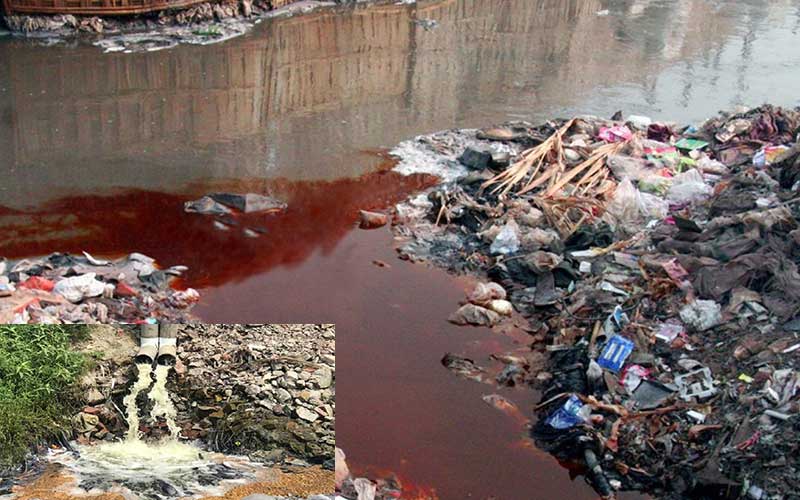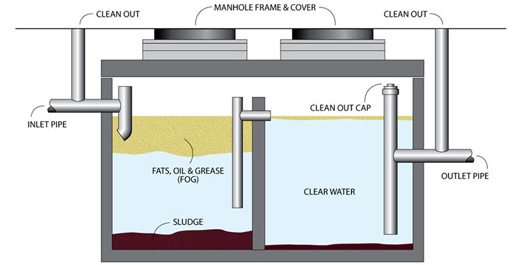Reliable Liquid Waste Disposal Melbourne: Safe and Effective Providers
Exactly How Fluid Garbage Disposal Works: An In-depth Introduction of Techniques and Technologies Employed

Overview of Liquid Waste Types
The intricacy of fluid waste kinds demands a comprehensive understanding of their attributes and ramifications for disposal. Fluid waste can extensively be categorized into several types, including commercial, metropolitan, farming, and hazardous waste. Each group shows distinctive buildings, calling for details monitoring methods to alleviate ecological and health and wellness risks.
Industrial liquid waste stems from producing processes and frequently contains a series of impurities, such as heavy metals, solvents, and natural substances. Community liquid waste, largely comprising wastewater from houses and industrial facilities, includes natural issue, nutrients, and virus (industrial wastewater treatment). Agricultural liquid waste, including overflow from ranches, might consist of plant foods, chemicals, and animal waste, posing threats to water high quality and ecosystems
Harmful fluid waste is characterized by its poisoning, reactivity, or possible to cause injury. This classification consists of compounds like acids, bases, and particular chemicals that require rigorous handling and disposal procedures. Understanding these varied liquid waste types is essential for creating effective disposal approaches and guaranteeing conformity with environmental guidelines. Proper classification and characterization are crucial for carrying out appropriate therapy strategies and reducing the negative impacts on public health and wellness and the setting.
Physical Treatment Techniques

Testing is the first action, where bigger bits and particles are eliminated from the liquid waste using screens or grates. This procedure shields downstream tools from damages and makes sure smoother procedure. Complying with screening, sedimentation uses gravitational force to separate solids from fluids. In sedimentation storage tanks, much heavier particles settle at the bottom, creating a sludge layer, while the cleared up liquid can be further dealt with.
Filtering is another important method that entails passing the liquid via permeable materials, such as sand or membrane layers, to catch smaller fragments. This step boosts the high quality of the liquid, making it ideal for subsequent therapy processes.

Chemical Therapy Techniques
Chemical therapy techniques are essential for successfully handling liquid waste, particularly in addressing liquified and colloidal contaminants that physical techniques may not effectively remove. These strategies utilize different chemical agents to reduce the effects of, speed up, or change harmful compounds right into less dangerous forms.
One typical approach is coagulation and flocculation, where chemicals such as alum or ferric chloride are contributed to promote the gathering of suspended bits. This procedure boosts sedimentation, allowing for much easier elimination of the resulting sludge. Additionally, oxidation procedures, using agents like chlorine or ozone, are employed to break down complicated natural compounds and pathogens, making the waste more secure for discharge or further treatment.
Neutralization is one more important strategy, which adjusts the pH of acidic or alkaline waste streams to neutral levels, stopping possible injury to downstream systems and the environment. Additionally, progressed oxidation procedures (AOPs) make use of mixes of oxidants and ultraviolet light to degrade persistent pollutants, accomplishing a greater degree of therapy performance.
Organic Therapy Procedures
Organic therapy procedures play an important function in the administration of fluid waste by making use of microbes to decay natural issue and reduce contaminant levels. These procedures can be broadly categorized right into cardio and anaerobic therapies, each using details my company microbial areas to attain efficient waste deterioration.
Cardiovascular treatment involves making use of oxygen to facilitate the breakdown of natural products by microorganisms. This procedure is generally carried out in triggered sludge systems, where aeration containers give a helpful atmosphere for microbial growth, resulting in the oxidation of organic pollutants. The resultant biomass can be divided from treated effluent through sedimentation.
On the other hand, anaerobic therapy occurs in the lack of oxygen, depending on different microorganisms to break down raw material. This approach is specifically beneficial for high-strength waste, as it generates biogas, an eco-friendly energy source, while minimizing sludge production. Technologies such as anaerobic digesters are regularly utilized in community and commercial this post applications.
Both anaerobic and aerobic organic treatments not just reduce the ecological effect of fluid waste however also assist in resource healing, making them important parts of sustainable waste monitoring techniques. Their versatility, performance, and efficiency sustain their widespread application throughout various markets.
Arising Technologies in Disposal
Innovative techniques to fluid waste disposal are quickly advancing, driven by improvements in technology and an increasing emphasis on sustainability. Amongst these emerging innovations, membrane layer bioreactors (MBRs) have gotten traction for their capability to incorporate biological therapy with membrane purification, resulting in high-grade effluent that can be reused in numerous applications. MBRs enable smaller sized impacts and much more efficient operations contrasted to conventional systems.
One more appealing growth is making use of anaerobic food digestion combined with nutrient healing modern technologies, which not just deals with liquid waste yet also creates biogas and recuperates useful nutrients like nitrogen and phosphorus. This dual advantage boosts resource effectiveness and minimizes environmental impact.
Additionally, progressed oxidation procedures (AOPs) are being taken on for the destruction of complicated organic contaminants. These methods utilize effective oxidants and stimulants to damage down pollutants at the molecular level, offering a highly reliable option for difficult waste streams.
Furthermore, the integration of artificial intelligence and artificial intelligence in waste administration systems is optimizing functional effectiveness and predictive maintenance, bring about minimized costs and improved ecological compliance. These technologies mirror a considerable shift in the direction of more effective and lasting fluid waste disposal techniques.
Final Thought
In final thought, effective fluid waste disposal demands a detailed understanding of various strategies and innovations. The integration of physical, chemical, and biological therapy techniques guarantees the reliable administration of varied waste types. Furthermore, the introduction of innovative technologies improves treatment efficacy and advertises sustainability in waste administration practices. By continually advancing these methodologies, it ends up being possible to address the expanding difficulties associated with liquid waste, inevitably adding to environmental management and resource recovery.
Fluid waste disposal is a vital element of ecological monitoring, calling for a comprehensive understanding of various methods and innovations customized to various waste kinds. Fluid waste can generally be classified right into several types, including industrial, community, agricultural, and dangerous waste. Agricultural fluid waste, consisting of drainage from ranches, might have plant foods, pesticides, and her latest blog animal waste, presenting threats to water top quality and communities.
Different physical therapy approaches play an important role in handling fluid waste properly - industrial wastewater treatment.In verdict, effective fluid waste disposal demands a thorough understanding of various techniques and technologies